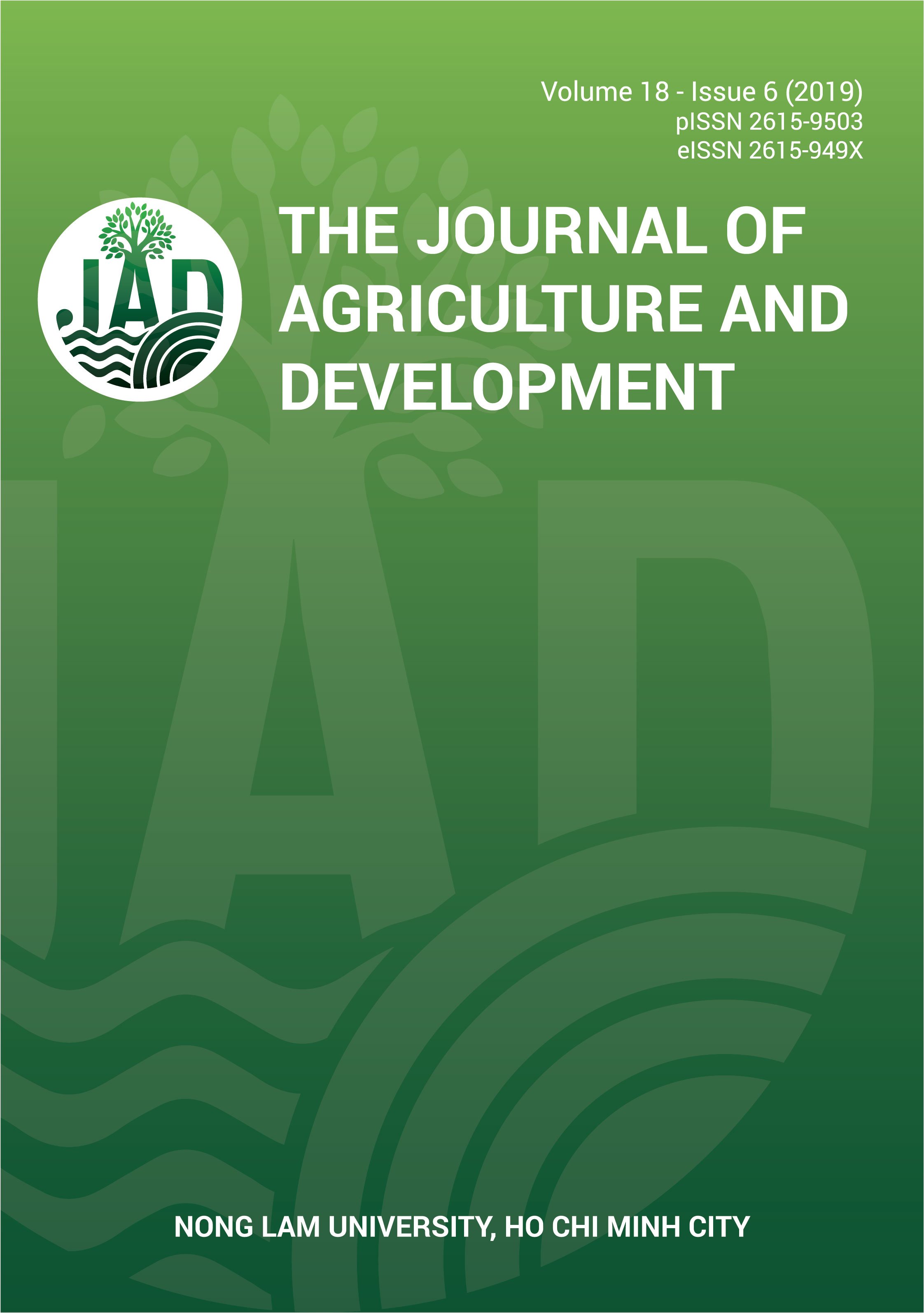Effects of different extraction methods on the recovery yield of bixin from annatto seeds (Bixa orellana L.)
Main Article Content
Abstract
Bixin is a principal color component of annatto pigment which is obtained from the seed coat of Bixa orellana L., a tropical shrub. The extraction yield of bixin from annatto seeds using acetone, soybean oil and sodium hydroxide solution with different extraction conditions were investigated in this study. The extraction time, temperature, solid-liquid ratio and light exposure showed significant effects on the bixin yield. The extraction using soybean oil had the lowest bixin yield followed by the extraction using sodium hydroxide solution. The extraction using acetone resulted in the highest extraction yield (68.1%) after only 40 min. The extraction using soybean oil at 100oC led to two-fold bixin yield compared to that operated at 80oC while the mild temperature (50oC) was found to be the most suitable for the extraction using sodium hydroxide solution. The exclusion of light exposure by covering extraction beakers with aluminum foil could significantly improve the bixin extraction yield due to the reduction in bixin degradation. Therefore, the extraction using acetone avoiding light exposure is suggested for recovering bixin from annatto seeds.
Article Details
References
Balaswamy, K., Prabhakara Rao, P. G., Satyanarayana, A., & Rao, D. G. (2006). Stability of bixin in annatto oleoresin and dye powder during storage. LWT - Food Science and Technology 39, 952-956. https://doi.org/10.1016/j.lwt.2005.07.004
Bechtold, T., & Mussak, R. (2009). Handbook of natural colorants. New Jersey, USA: John Wiley & Sons.
Cannon, J., Cannon, M., & Dalby-Quenet, G. (2003). Dye plants and dyeing. Virginia, USA: Timber Press.
Gloria, M. B. A., Vale, S. A., & Bobbio, P. A. (1995). Effect of water activity on the stability of bixin in an annatto extract-microcrystalline cellulose model system. Food Chemistry 52, 389-391. https://doi.org/10.1016/0308-8146(95)93287-2
Green, C. L. (1995). Natural colourants and dyestuffs report. Rome, Italy: FAO.
Lauro, G. J., & Francis, F. J. (2000). Natural food colorant. New York City, USA: Marcel Dekker.
McKeown, G. G. (1963). Composition of oil-soluble annatto food colours II. Thermal degradation of bixin. Journal - Association of Official Analytical Chemists 46(5), 790-796. https://doi.org/10.1093/jaoac/46.5.790
Najar, S. V., Bobbio, F. O., & Bobbio, P. A. (1988). Effects of light, air, anti-oxidants and pro-oxidants on annatto extracts (Bixa orellana). Food Chemistry 29, 283-289. https://doi.org/10.1016/0308-8146(88)90043-X
Prabhakara Rao, P. G., Jyothirmayi, T., Balaswamy, K., Satyanarayana, A., & Rao, D. G. (2005). Effect of processing conditions on the stability of annatto (Bixa orellana L.) dye incorporated into some foods. LWT - Food Science and Technology 38(7), 779-784. https://doi.org/10.1016/j.lwt.2004.08.015
Preston, H. D., & Rickard, M. D. (1980). Extraction and chemistry of annatto. Food Chemistry 5(1), 47-56. https://doi.org/10.1016/0308-8146(80)90063-1
Shuhama, I. K., Aguiar, M. L., Oliveira, W. P., & Freitas, L. A. P. (2003). Experimental production of annatto powders in spouted bed dryer. Journal of Food Engineering 59(1), 93-97. https://doi.org/10.1016/S0260-8774(02)00433-8
Silva, G. S., Souza, A. G., Botelho, J. R., Silva, M. C. D., & Silva, T. M. S. (2007). Kinetics study of norbixin’s first stage thermal decomposition, using dynamic method. Journal of Thermal Analysis and Calorimetry 87, 871-874. https://doi.org/10.1007/s10973-006-8198-6
Smith, J. (2006). Annatto extracts. 67th JECFA - Chemical and Technical Assessment 21, 1-13.








